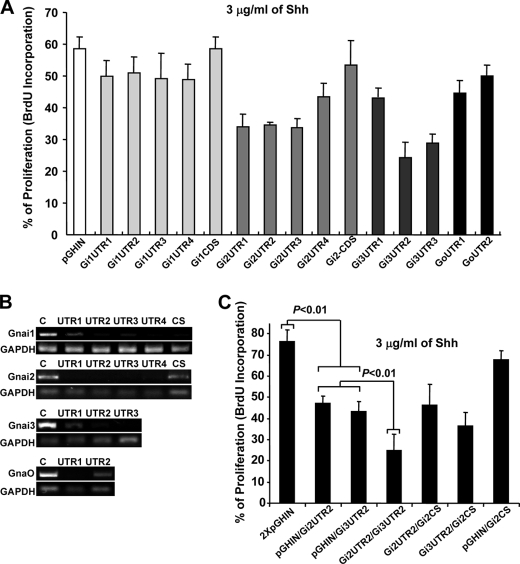FIGURE 3.
Gαi2 and Gαi3 knockdowns significantly reduce Shh induced CGNP proliferation. Different DNA sequences encoding shRNA, targeting either the 3′UTR (UTR) or CS of the different Gαi/o class members, were cloned into pGHIN (a pSUPER-based GFP-expressing bicistronic vector). The number of shRNAs designed for each Gαi/o depended on the availability of adequate targeting motifs in the respective sequences (see “Experimental Procedures” for details). A, the shRNA expressing constructs were electroporated into freshly isolated CGNPs, which were then halved and grown in a saturating concentration of Shh (3 μg/ml) for 48 h. One culture was used to isolate mRNA for RT-PCR analysis and the other to measure proliferation by BrdU. B, the targeting efficiency of each shRNA was evaluated by RT-PCR. A direct correlation between targeting efficiency and proliferation reduction was observed only for shRNAs targeting Gαi2 and Gαi3. C, the most efficient shRNAs against Gαi2 and Gαi3 (Gi2UTR2 and Gi3UTR2) were assayed together or in combination with Gi2CS, a low efficiency shRNA which was used as a control. The total amount of DNA was equivalent for all transfections. Proliferation was significantly reduced compared with empty vector when either Gi2UTR2 or Gi3UTR2 were transfected (p < 0.01). Double transfection of Gi2UTR2 and Gi3UTR2 significantly reduced proliferation as compared with single transfections or to doubles with Gi2CS (p < 0.01).

